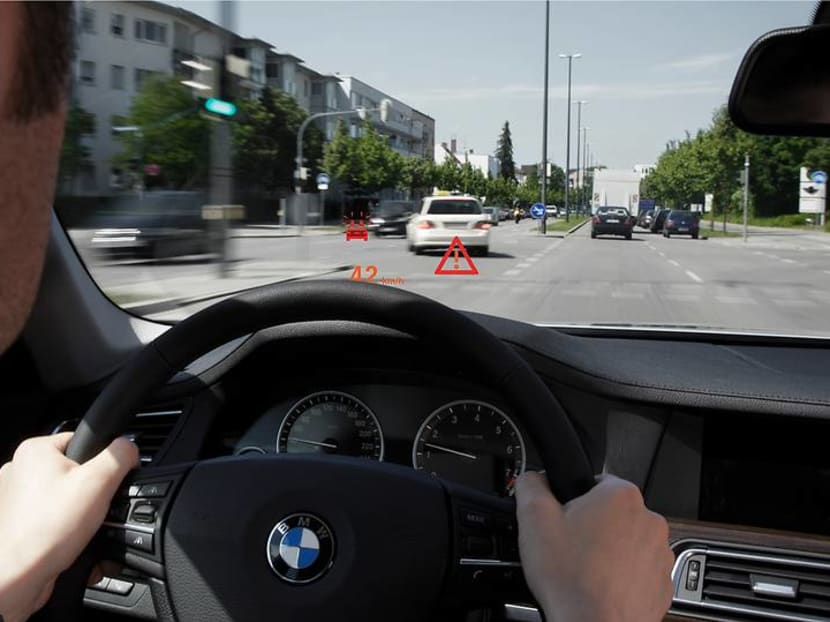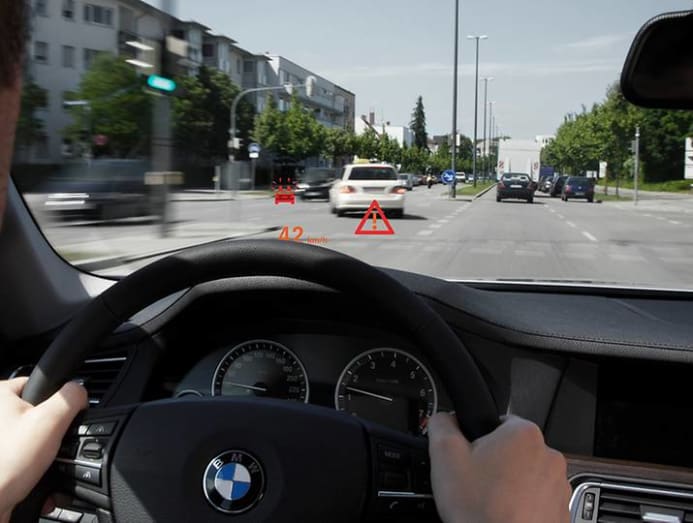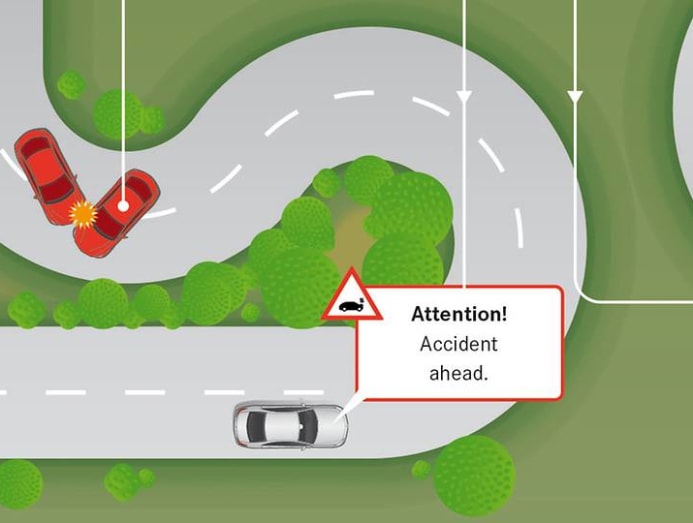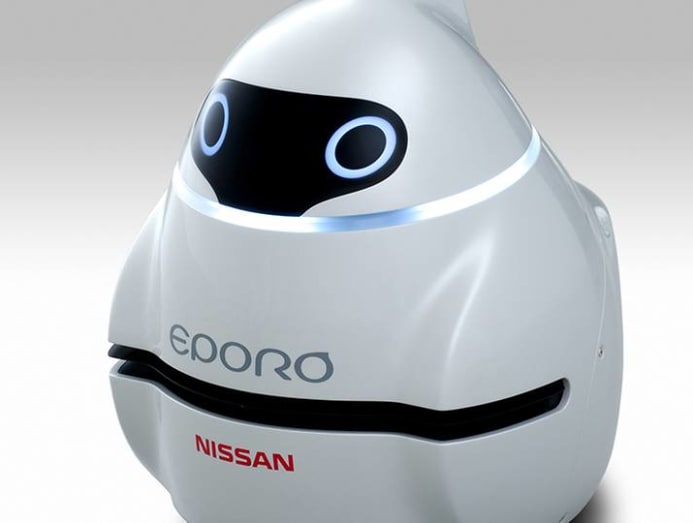The automotive revolution you’ve never heard about: Car-to-x connectivity
In addition to electric and autonomous cars, the connected one will also change our lives.

One advantage of such a technology is it could warn motorists of oncoming emergency vehicles. (Photo: BMW)
You might already have heard that the electric car will be the Next Big Thing in the automotive world. You might also have heard about how autonomous technologies will also, ahem, drive the world forward in the not too distant future.
But there’s one thing you probably haven’t heard about, and it’s quite possibly even more important than all of the above. That is, car-to-x communication.
This comprises a whole raft of technologies, but in a nutshell, what this means is cars “talking” to each other, sending, receiving and sharing information among themselves. The obvious benefit to this, of course, is to prevent collisions by proactively taking steps to avoid it.
For example, there’s a pothole or fallen tree ahead. The first car to spot it will then relay the message to the cars further down the line, highlighting the hazard on each car’s head-up display and negating the need for vehicles to swerve suddenly to avoid said hazard.

And that’s not the only potential life-saving benefit of car-to-x connectivity. An emergency vehicle could also employ this to signal other road users that they’re incoming, or to warn traffic when it’s approaching an intersection.
Or it could also make your commute smoother. Say there’s a traffic jam on your usual route. This information could then be relayed from traffic lights or cameras to cars on the same route, which in turn will be used by the cars’ navigation systems to automatically route drivers around the congestion.
Sticking with the topic of smoother commutes, those same traffic lights could tell road users of when “green waves” will occur, with vehicles maintaining speeds to catch those waves. This not only makes commuting far more pleasant, it could minimise instances of slowing down/speeding up and stopping, thereby reducing fuel consumption and emissions.
If all this sounds deceptively simple, well, it kind of is. Most cars already have navigation systems built into them. Ditto for RTTI (real-time traffic information) systems, collision avoidance/mitigation systems and head-up displays.
In addition to that, many cars now have some semblance of autonomous driving features built into them, with the most obvious example being adaptive cruise control. A development of vanilla cruise control, cars equipped with such systems will automatically follow the car in front at a safe distance, even if the preset speed is higher. If the leading car slows down, the one following will maintain that distance.
READ> Look ma, no hands: How our cars use driver-assistive tech to keep us safe
In effect, a modern automobile is like a computer on wheels, with the sort of digitalisation and information-processing smarts that was all but a science fiction pipe dream on the same level as a flying car barely 20 years ago.
And with the advent of 5G mobile networks, all that information could be collated and shared among other road users virtually instantaneously and over great distances. Previous, work on car-to-x communications relied on WiFi networks, which while speedy, have a very limited range and are prone to interference.
Think of the frustration of dropped signals and crossed wires you get when connected to a public WiFi with hundreds of users and you get the idea. Except when it comes to road safety, a glitchy network could have far more dire ramifications than not being able to view the cat video your friends just sent you.
Still, there are several layers of redundancy built into such systems. Even if the cloud goes down, the car will be able to rely on short-range communications, and if that fails, it can use its on-board sensors or cameras.
So if all these systems are already available, what’s the metaphorical roadblock? Why isn’t adoption of car-to-x communications a reality yet?
Actually, that’s not entirely inaccurate, since Mercedes-Benz has been employing car-to-x communications on their cars since 2013, albeit only among its own cars.

At any rate, the answer to that is simpler still. While cars are talking, they’re only talking to themselves and they can’t to talk to other cars, because they’re not speaking the same language.
But all that is set to change, because in 2019, BMW, Daimler (the parent company of Mercedes-Benz), Ford and Volvo, along with navigation service provider Tom Tom and several EU transport authorities, began working on a car-to-x technology project.
The project aims to provide a manufacturer-agnostic and pan-EU solution to implement such technologies on their future products. The fact they’re also working with the relevant governmental bodies will also ensure full compliance with regulations, so if/when car-to-x is finally a reality, it can be put to work immediately without too much legal wrangling.
All this will be underpinned by cloud-based computing, so all this information can be accessed from virtually anywhere and with the super-fast data connections powering all that, it’ll be available almost in real-time.
To say this is a huge move is understating things somewhat, and if it does come to fruition, it’ll bring us that much closer to an automotive utopia.
What it doesn’t say, not explicitly anyway, is the impact these technologies will have on autonomous driving, another pillar of the way we will use cars in the future. Networked cars are important when there’s a human behind the wheel, but when the driver is a machine, it could be invaluable.
A driverless car that has more information at its disposal – of the other cars around it, plus of current and upcoming road conditions or hazards is, logically enough, that much safer. For its occupants and for others using the roads at the same time.
READ> Driverless cars may be coming, but let’s not get carried away
To that end, there’s another suite of advancements in the works: Swarm technology. Essentially, it uses a computer algorithm derived from shoals of fish or swarms of insects, and applied to the automotive space, this allows for clusters of vehicles to move as one entity.
Swarm technology was exhibited as far back as 2009 with the Nissan EPORO demonstrator. Packs of six driverless vehicles were travelling together, effortlessly changing directions and avoiding collisions with each other. This all happened in real-time, with the EPORO robots using their on-board sensors to gauge their distance/speed relative to others and react accordingly.

In all fairness, though, those robotic vehicles were the size of toy cars and barely moved faster than walking speed. Even then, it’s a fascinating peek into what a highway of the future could look like.
A highway full of networked vehicles all communicating with each other the keep the roads safe for all. Car-to-x communications may be the next big automotive leap you’ve never heard of, but if things are progressing the way they are, you might be hearing about it (or indeed, experiencing it for yourself) sooner than you think.



